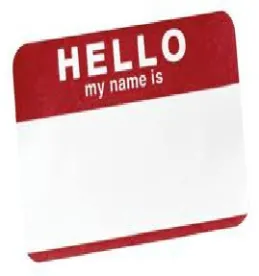The FDA has been gradually issuing guidances to implement the Biologics Price Competition and Innovation Act of 2009 (“BPCIA”). One of the most eagerly awaited guidance documents has been that on nonproprietary names to be used for biosimilar products. On August 28, 2015, the FDA finally issued its draft “Guidance for Industry: Nonproprietary Naming of Biological Products” (“the draft Guidance”). The draft Guidance will apply to all newly licensed and previously licensed biological drug products approved under Sections 351(a) and (k) of the Public Health Service Act (“PHSA”), except those for which a nonproprietary name is provided in 21 C.F.R. Part 600 and certain other biologic products “for which there are well-established, robust identification and tracking systems to ensure safe dispensing practices and optimal pharmacovigilance.” See 80 Fed. Reg. 52296 (August 28, 2015).
Pursuant to the draft Guidance, each nonproprietary name would consist of a “core name” and a designated suffix. The “core name” would be the name adopted by the United States Adopted Names (USAN) Council for the biologic substance (when available). The “core name” would be the same for the originator biological drug product and the biosimilar drug product. A different suffix would be added to the “core name,” separated by a hyphen. The draft Guidance provides that the designated suffix should be:
-
four lowercase letters;
-
unique; and
-
devoid of meaning.
and should NOT:
-
be promotional (making a representation of safety and/or efficacy);
-
include commonly used abbreviations used in clinical practice;
-
contain or suggest any drug or biologic name or core name;
-
be confusingly similar to a currently marketed product; and
-
be too similar to any other product’s suffix designation.
In a proposed rule issued the same day, the FDA proposed nonproprietary names for six currently approved biological products. See 80 Fed. Reg. 52224, August 28, 2015. They are as follows:

In each case, those suffixes did not contain any vowels. The Agency has not specifically prohibited use of vowels, but it may be difficult to create the type of suffix envisioned by the Agency with a vowel. The Agency also emphasized that there may be cases in order to prevent medication errors and to facilitate pharmacovigilance where a prefix may be necessary instead of a suffix.
As to interchangeable biological products, the Agency is considering two alternatives:
1) Use of the same core name and suffix for the reference originator product and interchangeable biosimilar; and
2) Use of a unique suffix.
The FDA is requesting comments on these alternatives.
Under the draft Guidance, the FDA is requesting that the proposed suffix be submitted for review either during the IND process or at time of the BLA submission. The Agency stated three suffixes should be submitted, in order of preference.
The Agency cited three main rationales for its proposal:
1) Ensuring safe use of biological products;
2) Enhancing biological product pharmacovigilance; and
3) Providing a consistent, readily available and recognizable mechanism for parties to correctly identify products.
It will use these factors in evaluating suffixes proposed for use.
In promulgating the draft Guidance, the Agency rejected the approach to require different core names for biosimilar products, as it has the “added benefit of avoiding inaccurate perceptions of the safety and effectiveness of biological products based on their licensure pathway.” It also apparently rejected an approach proposed by some to use a corporate identifier as the suffix, since it has proposed to change the name of Sandoz’s Zarzio® filgrastim product from “filgrastim-sndz” to “filgrastim-bflm.” It has, however, requested comment on whether a meaningful suffix – such as a suffix arrived from the name of the license holder – has benefits and/or challenges. See 80 Fed. Reg. 52297.
The Agency is requesting comments on a variety of different issues, in addition to whether a corporate identifier could be used as a suffix as opposed to a unique suffix for each product. Among these are comments on whether there are benefits or challenges to interchangeable biosimilars having the same suffix as the originator product, whether a biosimilar should have its name changed if it is found interchangeable after approval, how it should implement the requirement for a suffix as for previously licensed products, how long a company should have to change labeling to include the new name, and how the Agency should deal with a potential WHO Biological Qualifier scheme. See 80 Fed. Reg. 52297-8.
Comments on the draft Guidance can be made through September 28, 2015, and on the Proposed Rule through November 12, 2015.



 />i
/>i